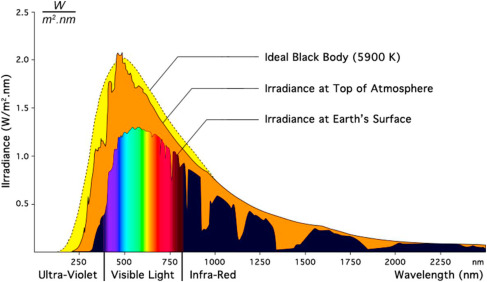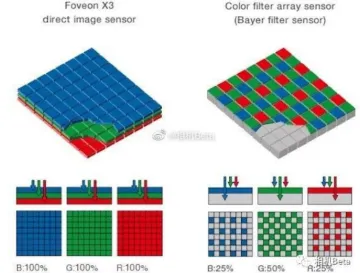With the "Reality-Based 3D China" project being piloted and implemented across various regions, the operational areas have expanded compared to the "Real Estate Integration Project." The focus of oblique photography has shifted from model accuracy to modeling effects. Many clients are puzzled by the color styles of models—some prefer warmer (yellowish) tones, while others favor cooler (bluish) ones. Some desire more vibrant images with saturated reds and greens, while others seek colors that are more true to life. What are the underlying principles behind these different color styles? Should we approach this like photography, choosing between straight-out-of-camera and post-processing? This article explores the principles of imaging and color.
What Is Color? What Is the Color of Light?
In "What Is Life?" Schrödinger describes:
"What is yellow light? If you ask a physicist, they will tell you it's a transverse electromagnetic wave with a wavelength around 590 nanometers. If you ask where yellow comes from, they might say it doesn't truly exist; it's a sensation produced when our healthy retinas encounter these vibrations."
Thus, color is a subjective perception, and light is essentially an electromagnetic wave.
Further, yellow light can be produced not only by a 590 nm wavelength but also by mixing red (760 nm) and green (535 nm) light in certain proportions. Visually, these combinations are indistinguishable.
From a physicist's perspective, color doesn't inherently exist; it's not a property of matter. Like pitch, taste, smell, texture, and temperature, color is a property perceived by humans. For physiologists, color is an attribute discerned by the brain after processing electromagnetic waves emitted by objects. In simple terms, color is a subjective creation by humans, interpreting the vibrations of light waves around us.
How Do Humans Subjectively Distinguish Colors?
The human eye can perceive light wavelengths approximately between 400 nm and 780 nm, known as the visible spectrum, which is a small portion of the electromagnetic spectrum.

This range is evolutionarily significant because the sun's radiation energy is concentrated within it.

The human retina contains three types of cone cells sensitive to blue (~450 nm), green (~480 nm), and red (~570 nm) light. Therefore, physiologically, humans can perceive three primary colors: blue, green, and red. Our brains process combinations of these to perceive a wide range of colors.
Humans are more sensitive to color differences than to pitch differences. However, compared to some animals, human color perception is limited. Bees, for instance, have additional ultraviolet receptors, allowing them to see more nuanced colors. Mantis shrimp possess 10–20 types of photoreceptors, effectively making their eyes biological spectrometers.
The most powerful spectral recognition devices are hyperspectral cameras. On May 9, 2018, China's Gaofen-5 satellite was launched, equipped with 330 spectral bands covering wavelengths from 400 nm to 2500 nm, including 150 V-NIR bands (5 nm resolution) and 180 SWIR bands (10 nm resolution), with a spatial resolution of 30 meters.

How Do Cameras Recognize Colors?
Unlike human eyes, which have three types of cone cells to detect colors, image sensors can only record light intensity (the number of electrons generated by photons via the photoelectric effect) and cannot directly sense color information. To capture color images, digital cameras use a Bayer filter, invented by Kodak scientist Bryce Bayer. This filter consists of a mosaic of red, green, and blue filters placed over the sensor, allowing a single sensor to capture full-color images. Most digital cameras, camcorders, and smartphone cameras use this technology.
The Process Works as Follows:
-
Filtering: Each filter point allows only one of the three colors (red, green, or blue) to pass through, meaning the underlying pixel can only detect that specific color. The arrangement typically includes twice as many green filters as red or blue, as human eyes are most sensitive to green.

-
Recording: The sensor records the light intensity for each filtered point.
-
Demosaicing: Since each pixel only captures one color, the camera estimates the missing colors by analyzing neighboring pixels. For example, yellow light (a mix of red and green) will activate both red and green filters but not blue. By assessing the surrounding pixels, the camera reconstructs the full-color image.
Through the Bayer filter and post-processing, digital cameras can record vibrant, full-color images.
Foveon X3 Image Sensor
Some cameras, like Sigma's, use the Foveon X3 sensor, which doesn't rely on a Bayer filter. Instead, it captures full-color information at each pixel by stacking three photodiodes at different depths within the silicon. The top layer detects blue, the middle green, and the bottom red, utilizing silicon's varying absorption of different wavelengths.

This design ensures 100% capture of RGB light at each pixel, resulting in images with excellent sharpness, rich colors, and detailed textures, while avoiding issues like moiré patterns. However, it requires more light, has poor high-ISO performance, and consumes more power.
The Three Elements of Color
Every color has three basic attributes: hue, saturation, and brightness.
-
Hue: Determined by the light's frequency, it refers to the type of color (e.g., red, green, blue). Hue is the primary characteristic that distinguishes different colors. The Bayer filter's purpose is to identify different light frequencies to perceive various hues.

-
Brightness: Also known as lightness, it indicates how light or dark a color is. In grayscale, white has the highest brightness, black the lowest. In colors, brightness varies with the amount of white light reflected.

-
Saturation: Refers to the purity or intensity of a color. High saturation means vivid colors, while low saturation results in dull or grayish tones. Pure colors have the highest saturation; mixing with gray reduces it. High saturation conveys energy and passion, while low saturation feels subdued and stable.

White Balance
White balance refers to a camera's ability to accurately reproduce the color white. For example, when you place a white sheet of paper under different lighting conditions, its appearance may vary — it may look brighter under sunlight, grayer under incandescent light, or slightly yellowish at dusk. Despite these changes, the human eye still perceives the paper as white because of its advanced adaptability. However, a camera records colors objectively based on the ambient light. Under candlelight, for instance, the same white paper may appear yellowish in a photo. White balance is the mechanism that allows the camera to adjust for lighting conditions so that white objects in the real world appear truly white in the captured image.
Color Style
The color style of an aerial image is determined by how the sensor, using a Bayer filter and color interpolation (demosaicing), perceives hues and adjusts the brightness and saturation of each pixel to create a desired visual tone. White balance then ensures that the resulting image accurately reflects true colors under varying lighting conditions.
For aerial surveying clients, achieving a consistent color style across different lighting conditions and camera models is crucial. This consistency is precisely what RIEBO strives to deliver through its technological innovation.










